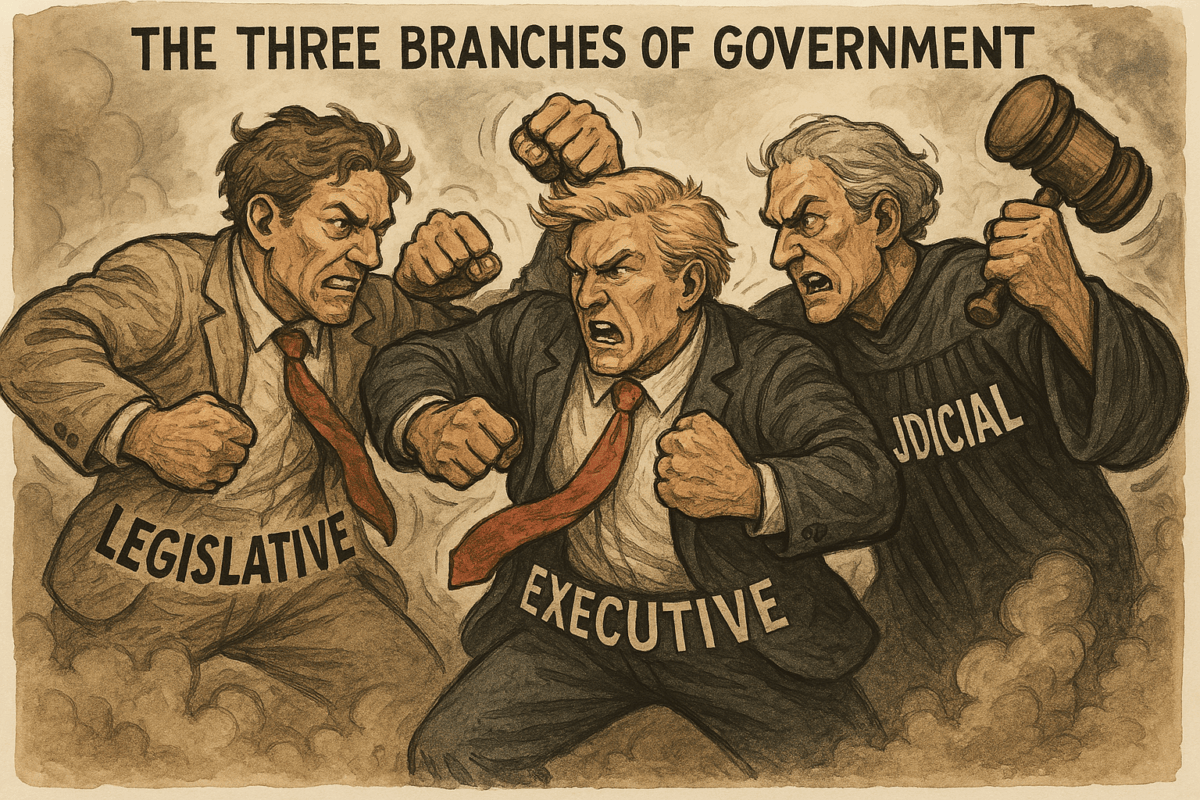GUARDING DEMOCRACY AND THE CHALLENGE OF JUDICIAL ACTIVISM
Growing up in the vibrant community of Chebanse, IL, and attending Clifton Central High School, I learned about the three branches of the U.S. government. It’s surprising to see how many people today, even college students, are unaware of this fundamental structure. Let’s revisit these branches and their roles.
The Legislative Branch
The Legislative Branch is responsible for making laws. It consists of two chambers: the House of Representatives and the Senate, collectively known as Congress. Members of Congress are elected by the public and wield significant power. Personally, I believe they should have term limits similar to those of the President.
The Executive Branch
The Executive Branch, led by the President, enforces and implements laws. It includes the President, Vice President, Cabinet, and various federal agencies. The President is elected through the Electoral College, a system ingeniously designed by the Founding Fathers.
The Judicial Branch
The Judicial Branch interprets laws and ensures their fair application. It comprises a system of federal courts, with the Supreme Court as the highest authority. Justices are appointed by the President and confirmed by the Senate.
The U.S. government is built on the principle of coequal branches, where each branch has distinct powers and responsibilities, preventing any single branch from dominating. This balance is maintained through:
Separation of Powers: Each branch has specific functions—Congress makes laws, the President enforces them, and the courts interpret them.
Checks and Balances: Each branch can limit the powers of the others. For instance:
· The President can veto legislation.
· Congress can override a veto with a two-thirds majority.
· The Supreme Court can declare laws or executive actions unconstitutional.
Judicial Activism: A Growing Concern
While the Judicial Branch plays a crucial role, activist judges all too often overstep their authority. Their role is to interpret laws, not create them. However, some judges, particularly in recent years, have applied the Constitution in ways that deviate from its original intent. This trend, which I attribute largely to policies introduced during Barack Obama’s presidency, undermines democratic processes by allowing unelected judges to decide political issues.
Activist judges have promoted a liberal agenda on moral and cultural issues like same-sex marriage and abortion—matters that should be decided by voters. They’ve also challenged the President on public safety and security issues, disrupting the balance of power. Since judges are appointed, not elected, they lack accountability to the public.
Moreover, judicial activism often leads to inconsistent legal rulings, prioritizing individual rights over community standards and traditional values. This unpredictability can erode societal cohesion.
The Debate on a “Living Constitution”
Many liberals view judicial activism as a tool for progressive change, advocating for a “living Constitution” that adapts to contemporary values. This perspective contrasts with the belief that the Constitution should be strictly interpreted based on its original meaning. Our Founding Fathers anticipated that society’s needs would evolve over time, so they designed a process for amending the Constitution. This system ensures that while the core principles remain intact, necessary changes can be made to reflect contemporary challenges and values.
In conclusion, the structure of the U.S. government—with its distinct yet interdependent branches—is a testament to the Founders’ commitment to balance and accountability. Each branch plays a vital role: Congress crafts legislation, the President enforces the law, and the judiciary interprets it within the bounds of the Constitution. However, challenges arise when judicial activism appears to blur these boundaries, potentially unsettling the delicate equilibrium intended to protect our democratic ideals.
Ultimately, a vigilant and well-informed citizenry is essential to ensure that each branch remains true to its purpose, thereby safeguarding the original intent and spirit of our constitutional framework.



